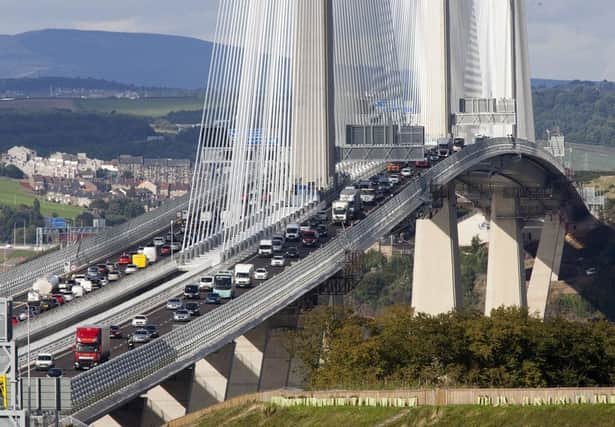Here’s why more Scottish commuters are taking the car to work than 20 years ago – Alastair Dalton


Build a new bridge and people flock to drive over it? You might think that was obvious, but the fact more people are now driving over the Queensferry Crossing than the Forth Road Bridge before, when ministers pledged there would be no such growth, illustrates how they have got virtually nowhere in persuading commuters to switch from their cars.
A Scottish Government survey has shown that 67.7 per cent of Scots get to work by car in 2018, and, extraordinarily, that figure is even higher than the 66.4 per cent in 1999.
Advertisement
Hide AdAdvertisement
Hide AdThe rise comes despite two decades of efforts since devolution by the Scottish Government to achieve “modal shift” to buses and trains, cycling and walking.
Yes, there has been a significant increase in rail commuting, but it still only accounts for 5.5 per cent of those travelling, and amounts to only half the number who walk or take the bus.
Transport Scotland officials clearly thought the building of the Queensferry Crossing would be a golden opportunity to stem car growth and offer attractive alternatives to simply joining the peak-hour cross-Forth tailbacks.
Hopes of a free-flowing experience
The bridge – originally the “Forth Replacement Crossing” – would have no extra lanes than the Forth Road Bridge it was replacing, while the latter would become part of a “public transport corridor” that gave buses a clear run across the estuary for the first time.
Advertisement
Hide AdAdvertisement
Hide AdBut I bet those details were lost on some commuters, who might have thought the new bridge would at last provide an equally free-flowing experience for their own wheels.
Some may have even been tempted to move from Edinburgh and to drive to work from one of the new housing estates springing up in Fife. Some Fife commuters may even have decided to switch to their cars too.
And the result? While there may be fewer tailbacks on the bridge thanks to crashed and broken-down vehicles being moved onto the hard shoulder, the tailbacks on the approaches appear to be just as bad as before.
It doesn’t help that only half the planned bus improvements have been made, regardless of whether officials insist some are longer term.
Advertisement
Hide AdAdvertisement
Hide AdThese should have been completed before the bridge opened if ministers were serious about trying to halt traffic growth.
Driving getting cheaper than bus or train
While Stagecoach, the main cross-Forth bus operator, this week hailed the new public transport corridor as a “fantastic success” with passenger numbers up 17 per cent, there were still an extra million vehicles using the Queensferry Crossing in the year to October compared to the previous 12 months. That revelation in Scotland on Sunday prompted a Holyrood committee hearing on Wednesday. Experts tell me a key factor is cost. As well as the sheer convenience of getting into your car compared to public transport, driving has, for a long time, been getting cheaper than the bus or train. While peak rail fares have gone up above inflation for several years, fuel prices have fluctuated and the overall cost of motoring has come down.
The other problem is that commuters – especially drivers – are creatures of habit. It’s a simple choice, they feel they are in control, and if they are held up, are in a warm, private space.
By contrast, using public transport, especially buses, can appear far more complicated and uncertain: “When do they go? How much is the fare? My bus stop doesn’t have a shelter...”
People are stuck in that rut and there’s still far too little incentive for them to change their travel habits.
